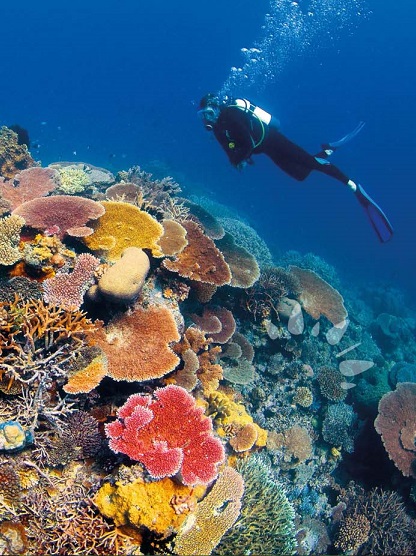Local reef fix impresses marine world
 Concrete action to boost the resilience of the Great Barrier Reef has been showcased on a global stage.
Concrete action to boost the resilience of the Great Barrier Reef has been showcased on a global stage.
Thousands of scientists and researchers gathered from around the world at the IUCN World Parks Congress in Sydney last week, to hear about protected area management, including marine areas such as the Great Barrier Reef.
Local action - such as reef protection markers preventing anchors damaging coral at Keppel Bay in the southern Great Barrier Reef - were discussed by Great Barrier Reef Marine Park Authority marine scientist Roger Beeden.
“Climate change is the greatest threat to coral reefs worldwide, including the Great Barrier Reef, and I’m delighted to share some of the work we’ve undertaken,” Mr Beeden said ahead of the talk.
“Managing climate change is embedded across all our work - our focus is building the health of the Reef so that it’s better able to deal with this threat.
“The reef protection markers are a simple but effective example of local efforts to support reef resilience - it was driven by community desire to take action to support coral recovery.
“The option that was chosen was to limit anchor damage and, overall, we’ve seen good results for coral.”
In 2008, four reef protection markers - white, pyramid-shaped buoys joined by an imaginary line - were installed to create a no anchoring area in Keppel Bay.
This followed severe coral bleaching in 2006 and increased levels of use in the area that was placing pressure on the marine environment.
In partnership with the local community, the Great Barrier Reef Marine Park Authority assessed the resilience of 31 reefs in Keppel Bay to identify recovery potential.
Two high resilience sites - where overall conditions meant there was a good chance coral health could improve if pressures were removed - and two lower resilience sites were selected, all of which were showing signs of anchor damage.
Follow-up reef surveys showed reduced anchor damage inside all four no-anchoring areas from about 80 instances per 1000 square metre in 2008 to fewer than ten in 2012.
Anchor damage also declined between 2010 and 2012 at three of the four control reefs near the no-anchoring areas.
Even though flooding in 2011 damaged one of the sites, overall, the no-anchoring areas have helped support the resilience of the reefs that they protect.
“Resilience is key to the Reef’s future, which is why all actions - big or small - are important. Targeting site-based local management actions and evaluating success is central to adaptive management,” Mr Beeden said.







 Print
Print